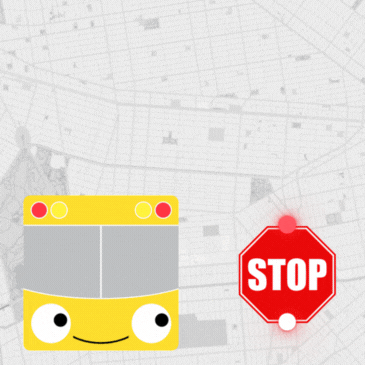
Here’s My Story: More Important Than Eating
Rabbi Shea Hecht
Click here for a PDF version of this edition of Here’s My Story, or visit the My Encounter Blog.
The highlight of any young man’s life is, of course, his Bar Mitzvah. And for Lubavitch families in the sixties this also meant the opportunity to have a personal audience with the Rebbe. Additionally, there was a custom in those days, at the public farbrengen preceding the occasion, for the Bar Mitzvah boy to go over to the Rebbe with his father and receive a special blessing.
My father, Rabbi J.J. Hecht, a devoted communal activist who worked for the Rebbe on a number of causes, was making a trip to Israel right before my Bar Mitzvah in 1967 — which happened to be just a few weeks before the Six Day War. When we approached the Rebbe at the preceding farbrengen, the Rebbe gave my father a bottle of spirits. “Since you are traveling to the Land of Israel,” the Rebbe told him, “I want you to spend Shabbat in Jerusalem and to lead the farbrengen there.” Before the Six Day War, Jerusalem was only partly under Jewish control, but the Rebbe wanted my father to bring this bottle there, to speak with the local chasidim and to inspire them.
Then, quoting a line from the Passover Haggadah, the Rebbe added a word of warning about the crowd my father would be facing: “But remember that over there, they fulfill the words ‘we are all wise, we are all understanding, we are all knowledgeable’…” The chasidim in Israel, in other words, had heard it all before, so inspiring them might prove to be a challenge.
Upon my father’s return, we were hoping to have a private audience with the Rebbe, but there was a problem. It was a Thursday, when the Rebbe would usually meet with people in the evenings, but because he was fasting — the Rebbe observed a series of fasts after every Passover and Sukkot — there weren’t going to be any audiences.
Fortunately, my father had some pull, and so he wrote a note to the Rebbe: “My son would very much like to have an audience before his Bar Mitzvah.” We were soon told that we could come to see the Rebbe before the evening service, but just me and my parents, so that it would be “without a commotion.”
Now, Bar Mitzvah boys traditionally deliver an in-depth discussion of some Talmudic issue, or a pilpul, at the celebration. And so, after we entered the Rebbe’s room together, the Rebbe asked me a few questions on my pilpul. Studying wasn’t my number one forte, but I had prepared well and had a good understanding of my subject, which was the various opinions on how the scriptural passages inside the tefillin are to be arranged. There is the pair of tefillin that all Jewish men put on, which follows the opinion of the sage Rashi, but then there are also versions that follow the views of Rabbeinu Tam, the Shimushah Rabbah, and Raavad.
The Rebbe asked me to explain the differences between these opinions, and I was able to answer him clearly.
After giving me a blessing, he asked, “And what is the outcome of your pilpul?”
“A G-d-fearing Jew must use two pairs of tefillin,” I replied. As I had learned, although it is rare for anyone to follow the opinion of the latter two Halachic authorities, someone who is considered pious is supposed to put on Rabbeinu Tam’s tefillin, in addition to Rashi’s.
“And what about you?” asked the Rebbe.
In those days, the Chabad custom was to not wear Rebbeinu Tam’s before the age of eighteen; Bar Mitzvah boys only had Rashi’s. But how did that connect with the conclusion of my pilpul? I knew that “Well, I guess I don’t have the proper fear of G-d,” was the wrong thing to say, but I also wasn’t about to start putting on Rebbeinu Tam’s tefillin. I was quiet.
The Rebbe gave a broad smile. “You will probably do what your father did at his Bar Mitzvah.” In other words, I didn’t have to start yet, because my father hadn’t.
At this point, I left the room, so that my parents could speak with the Rebbe privately. But later, in the car ride home, I heard what happened next.
After I left, the Rebbe first turned to my father, and remarked, “There are distinguished rabbis who come here and can’t describe the different arrangements of the four pairs of tefillin!” I’m not going to say that the Rebbe was impressed, but he was very happy that I was able to explain the matter with clarity.
The discussion then turned to my father’s trip. My father had brought the bottle of spirits to the Chabad synagogue in Jerusalem, as the Rebbe had instructed. During the little gathering that followed the prayers on Shabbat, he got up to speak.
“The Rebbe warned me about you guys,” he said. “But he also knows that I’m a pulpit rabbi, and an orator, and he wanted me to give a speech. So let me tell you this:
“When the Rebbe has a farbrengen, all the chasidim are there. When he leads the prayers, everyone is pushing to get close. But when the Rebbe asks us to do something, who shows up? Where are we?”
“Did you see how happy the Rebbe was when I told him how I spoke?” my father asked my mother on the way home.
But as they continued to discuss the trip, with the Rebbe asking for details about everything my father had seen in Israel, the Rebbe’s secretary began to get concerned. It was already time for the evening service, after which the Rebbe would conclude his fast, but my father was still talking to the Rebbe.
So, he opened the door, and started to say: “The Rebbe is fasting — please leave the room now.”
But the Rebbe told him to wait. “The report Rabbi Hecht is giving is more important than eating.”
When the Rebbe launched a tefillin campaign for Israel the next week, and then war broke out two days after that, we had an extra appreciation for the Rebbe’s heightened interest in what was going on in the country at the time.
Almost a decade later, in 1976, the Rebbe announced that everyone should be putting on Rabbeinu Tam’s tefillin in addition to Rashi’s, including younger boys. Citing the Talmud, he explained that wearing tefillin summons divine protection for the Jewish people against its enemies. As the “darkness of exile has grown,” as he put it, so are those who intend us harm stronger, but it is “G-d who saves us from their hand.” Therefore, we must observe the mitzvah of tefillin — with greater power, “both according to Rashi and Rabbeinu Tam.”
At that private audience all those years before, the Rebbe had implied that if not for the prevailing custom, Bar Mitzvah boys should be putting on Rabbeinu Tam’s as well. Now, he explicitly said that they shouldn’t wait until they were older. But what about tradition? The Rebbe explained that previous generations did not face the same challenges as we do today, especially when it comes to being exposed to ideas and ideologies that are foreign to the Torah. Since tefillin helps one “submit his heart and mind to the service of G-d” the added holiness of donning another pair of tefillin can help a person meet these challenges.
Thinking back to my Bar Mitzvah audience, and the Rebbe’s words to me, I understood: Rabbeinu Tam’s tefillin are like vitamins for having the proper fear of Heaven, so the Rebbe wants young boys to have them too!
An author, speaker, and communal activist, Rabbi Shea Hecht is the chairman of NCFJE, the parent organization of Jewish Released Time. He was interviewed in the years 2015, 2020, and 2023.












